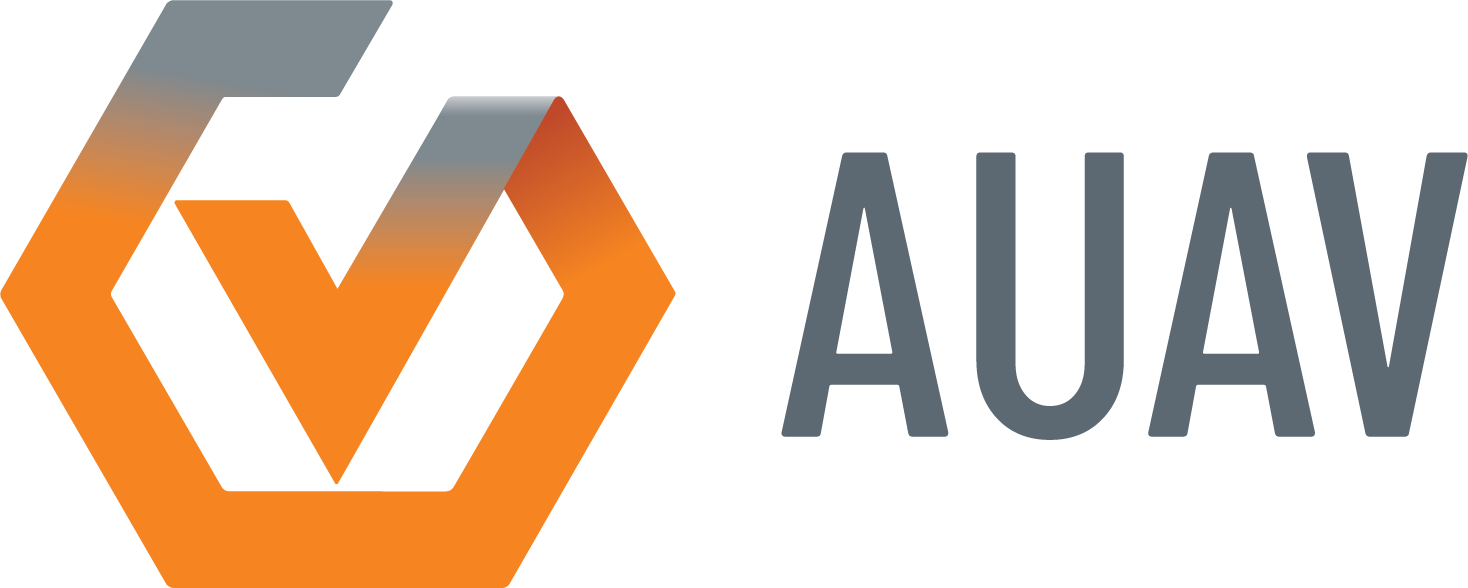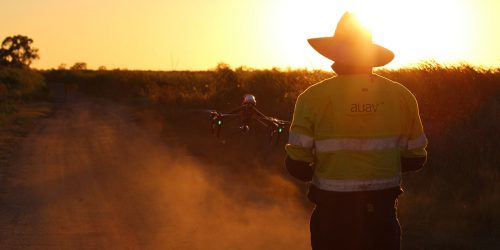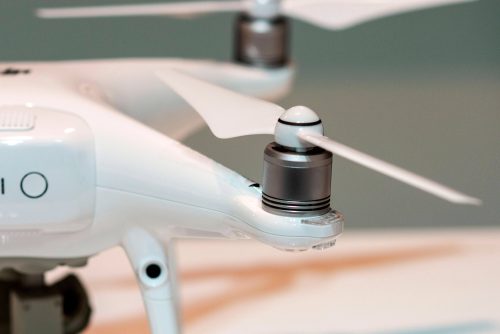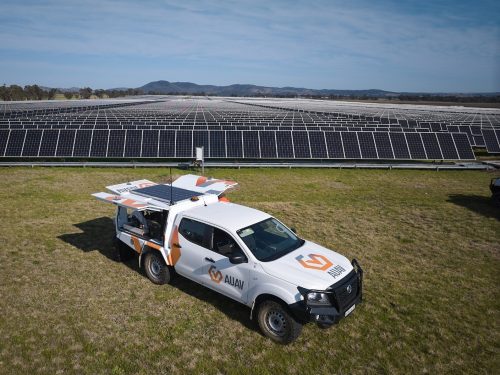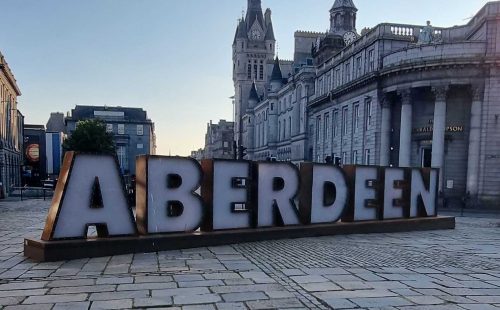Paul Smith is one of Australia’s most experienced aerial drone inspectors, and has been heading up AUAV’s inspection services from Perth since 2017.
Hi Paul, can you tell us your role at AUAV?
As Head of Inspection Services my role is to lead our drone inspection capability, and most importantly to bring my traditional inspection industry knowledge to it, so we’re not just a bunch of drone guys pretending to know about inspection!
Drones are an incredible tool for inspection, but as with anything it’s not about the gear but how you use it to get the job done. If you don’t understand what to look for and the nature of the defects on these structures, it is unlikely you’ll capture the right kind of data in the field.
As well as the drones I get involved with all aspects of NDE (Non-Destructive Examination) including radiography, ultrasonic testing, magnetic particle testing, dye penetrant testing, hardness testing, visual examination using traditional methods. It is great when we can provide a bit of additional work on site to support the drone visual inspection.
And I understand there are specific qualifications for inspection in a lot of your work?
Yes, oil and gas customers generally insist on a formal qualification, ASME Plant Inspector, welding inspector and other NDE qualifications including radiography. Although the qualifications are important, experience is the key. I have been working in the industry for 20 years and I have learned my trade from the ‘Old Timers’, which means we leave no stone unturned.
Inspection is a very important function, if we make a mistake it can cost millions of dollars or even lives. An NDE inspector has to have impeccable personal integrity and the ability to assess the last inspection of the day to the same standard as the first of the day.
Also, the inspector has to have the ability to make on the spot decisions and justify them, even under a great deal of pressure, for example during plant start-up. The outcome may not be what the client wants to hear but the inspector has to have the ability and integrity to stand by their professional judgement.
So you already had a background doing this kind of inspection? Tell us how you got into using drones in your work?
Around 8 years ago I noticed that there were a lot of people doing rope access visual inspections. This was very costly, on authorising an invoice from an on-site inspection company I thought there should be a cheaper way of doing it that didn’t compromise the results.
Small and quite cheap cameras started to appear on the market which had built in transmitters, and these were ideal for fitting on radio control helicopters. After many attempts, I found out that this setup was very limited, oil and gas and especially LNG facilities were worried to have a gas-powered RC helicopter on site and another big issue was that stabilised camera gimbals were not yet available, the shots were low quality and rather blurred at times due to vibration.
A few years later consumer drones became available with basic camera gimbals and the camera of choice was the GoPro. Obviously, things have advanced a long way now with our specialist high-res, zoom and thermal cameras, but at the time this was cutting edge.
When working in the Philippines I was recommended to a cell phone company who had issues with the cell towers falling down in high winds. Drones had advanced quite a way by this time, and I conducted a live inspection of one of their towers, and the company officials were sitting together in a nearby house watching the inspection live.
During the inspection we could see that towards the top of the tower, the bolts were held in with silicone and didn’t have any nuts. On landing I was summoned into the house, and a group of very worried looking officials give me the contract on the spot to inspect nearly 400 towers.
This led on to inspection of power lines, poles and other assets there. Again, by word of mouth, I was asked to visit Singapore and carried out a number of inspections for Petronas and EXXON. During that time I could see the potential for using drones in Australia, I approached a company called Stork Technical Services whom I had worked with before as a client representative and presented a business plan.
Stork invited my family and myself to Australia and employed me in the position of UAV lead, a new concept for them. We did some great work but the drone industry moves pretty quick, and I found that with Stork being a general inspection company they didn’t have the appetite to focus on and keep up with all the fast moving technology the drone world. I realised it would be better if I worked at a drone focused company, where I could be part of a team pushing this new technology and method, so approached the guys from AUAV.
What sort of structures are you typically inspecting by drone?
Most people think about the obvious tall things like flare or smoke stack inspection, of course, this is one of the things we can inspect but it’s only the tip of the iceberg. Any industrial site or processing plant is filled with assets, all of which need inspection on a regular cycle, and many of them are hard to access from the ground, or not safe to inspect without a shutdown.
Using drones is a great way of cutting costs and most importantly creating a safe inspection environment, most often without requiring isolation or shutdowns. In general anything tall, dangerous or hard to reach are perfect for inspection by drones. Towers, chimneys, reactors, pipework, jetties, loading arms, buildings, conveyors, bins and chutes are just some examples.
There’s lots of things people don’t think of too, like detecting CUI (Corrosion under insulation). Using thermal cameras we can find areas of insulation damage allowing us to trace possible water ingress and identify areas to strip insulation and inspect. This alleviates the need to completely strip down the pipework, saving a lot of time and money on inspection.
Recently we have started to inspect inside confined spaces such as pipes, tanks and pressure vessels too, which has opened up a lot of demand.
So, it is possible to fly in confined spaces, for internal inspections too?
Yes, for the past 2 years we have been using a special internal inspection drone.
This is having been developed by a specialised company in Switzerland, and can fly in confined spaces, tanks, culverts and also the underside of bridges and jetties, right up near the deck amongst the beams. The drone has a cage around it so can bump into things and not crash or cause damage to assets, it can simply bump along the surfaces or seams being inspected.
On average, we can save the client $30,000 while conducting internal inspections, as there is no need for scaffolding. The drone will fit through a 400mm manway, the operator is actually outside the tank so there is no need for any confined space access.
The drone has its own lighting system and records HD imagery and also has thermal capability.
It can also be used to inspect inside tanks, pressure vessels, pipelines, culverts, drains and anywhere it’s dangerous for a human being to access. Recently we had an enquiry to inspect within roof spaces for the presence of asbestos.
Flying the confined space inspection drone is very challenging, you don’t have GPS positioning inside and there is no ‘Return to Home’ functionality as you would have with most drones. When you are flying within a structure have to rely on experience and knowing where you are so as to never lose your orientation to get back home again. I use “landing lights” a set of LED lights I position near the manway, during the inspection I will look back to find the lights, this gives me my way home when the power is running low. I am fortunate to have a lot of time using this drone now, with over 90 hours logged during the past few months, and we haven’t lost one yet, which is also lucky, as they’re not cheap!
And are some of the most challenging drone inspection projects you’ve done?
Sometimes I need to fly the internal inspection drone outdoors too, for example on one occasion I was asked to inspect underneath a jetty after a cyclone had caused some damage. The winds were quite high so a normal drone would not be able to fly. I tethered the drone and lowered it over the edge, then swung it into position underneath, where I would power it up to “stick” the drone to the underside and roll along the underside. The video footage I supplied helped the engineering department to decide the course of action to take. Again, this saved the client a lot of money but most importantly in this case time.
The mining industry can also be quite challenging too, as there is normally a very small time window to carry out inspections during shutdowns. Recently on a mine site I was asked to inspect a dump station. The access area was very small, I had one hour to conduct the inspection, and inside was very complicated with narrow areas and complicated shapes. I was operating the drone from a safe area outside the dump station. The drawings were not accurate but I was able to conduct the inspection and the information I provided helped the client to modify the drawings.
What sort of details do you pick up with drone inspection, can you see cracks and so on?
We are often finding cracks, corrosion, delamination, deformations, abrasion and other common defects in hard to reach areas. We can in most cases identify ID stamps, allowing material traceability checks to be carried out. On flanges we can identify galvanic corrosion where possibly the wrong nuts and bolts have been used, quite a common problem.
We can monitor the corrosion, comparing it with the last inspection and make recommendations, for example clean and paint. We can also recommend further NDE inspection, normally surface methods or ultrasonic inspection of the suspect area.
Coating condition can also be monitored, close up inspection can reveal defects or just a stains.
Also some sites have very corrosive atmospheres , we can closely monitor under walkways, handrails, mono rails, mountings ,legs and braces down to the smallest nuts and bolts.
As the drones use a gimbal system we can zoom in very close and provide a steady image and clear still shots.
For inspection services nation-wide, send us an email or call out head office on 1300 738 521. Alternatively you can email Paul Smith: paul.smith@auav.com.au.
